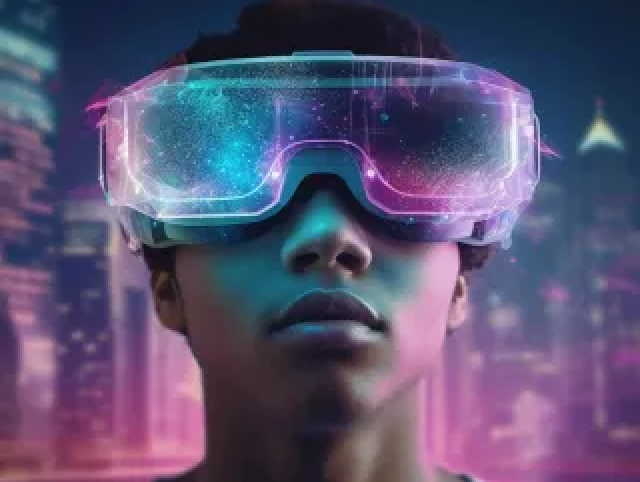Can We Use AI Bots for Sales Lead Generation in B2B Businesses?
Your One-Stop Business Partner | Outcome-Driven, Success-Focused Alright, fellow business warriors, here’s a scenario for you:What if instead of spending hours manually searching for business leads, you could sit back, sip your coffee (or matcha—no judgment), and have an AI bot do all the heavy lifting? Sounds pretty good, right? Well, it turns out this isn’t just a fantasy from a sci-fi movie. AI bots are here—and they’re shaking up B2B lead generation, which, let’s face it, has always been a challenging beast to tame. The Big Question: Can AI Bots Solve This Challenge? Yes—and no. To answer that, we first need to break down the two main parts of B2B lead generation: Outbound: Cold calling, cold emailing, direct prospecting. Inbound (Content-led): Creation of eBooks, social posts, SEO content, lead magnets, etc. AI bots can help immensely with the second (content-led generation).But the **first—outbound outreach—**is riddled with legal landmines and diminishing effectiveness. Let’s explore both—and how AI fits in. Why Handshake Deals Might Be Overrated Imagine the old-school way of lead generation as a hyper-persistent sales rep knocking on doors—except instead of doors, it’s LinkedIn profiles and company databases. Exhausting, right? Enter AI bots—your new best friends who never sleep, never need coffee breaks, and definitely won’t get lost in an Excel spreadsheet. These digital superheroes automate the boring stuff: sorting through mountains of data, qualifying leads, even sending out personalized emails. Tools like Cognism can glance at a sea of data and say, “Hey, this one fits your ICP better than a tailored suit.” How AI Bots Are Like the Digital Sales Reps You Always Wanted AI bots aren’t just nerdy bookworms combing through spreadsheets—they’re interactive, smart, and (almost) charming. Here’s what they bring to the table 👇 1. Lead Qualification on Autopilot Think of AI bots as bouncers at an exclusive club—but instead of turning people away for wearing Crocs, they filter out unqualified leads. Tools like Drift or HubSpot’s predictive scoring prioritize high-fit prospects using behavioral and demographic data.That way, your sales team can focus on VIPs, not dead ends. 2. Email Outreach With a Side of Sass AI tools like Mailchimp and ActiveCampaign craft targeted, personalized emails that feel more like conversations than cold pitches.They write like a smooth-talking sales rep with a flair for storytelling. 3. Chatbots That Woo Website Visitors Picture this: a visitor lands on your website at 11 p.m.—curious but not ready to commit.Before they vanish into the abyss, your AI chatbot (like Tidio or Landbot) engages them, qualifies them, and books a meeting—without breaking a sweat. 4. AI Knows Timing (And It’s Not Creepy!) Ever received an eerily well-timed follow-up? That’s not magic—it’s predictive AI. These bots analyze user behavior and send outreach when it’s most likely to convert.Creepy? Maybe. Effective? Absolutely. Inbound vs. Outbound AI Lead Generation: Know the Battlefield 🚀 Inbound (Content-Led) Lead Generation This is where AI shines. It powers smart chatbots, helps write engaging content, and qualifies visitors—all while your team sleeps.AI tools streamline your content marketing funnel, ensuring visitors become leads—and leads become opportunities. ✅ Client Fit: Excellent (3b) ⚠️ Outbound Lead Generation: Handle With Care AI in cold outreach (emails, calls, SMS) is a different story—and it’s full of legal red flags. Under TCPA (US), GDPR (EU), and DNC laws, using AI for cold calling without explicit consent can result in serious fines. 📉 In 2023, a Florida-based firm was fined $40,000 for using AI voice bots in outbound calls.Several European firms were fined €5,000–€50,000 for similar violations. ❌ Client Fit: Risky (3a)AI effectiveness is also declining here. Stick to manual outbound with human oversight—or better yet, funnel efforts into inbound. Challenges You Probably Didn’t Think Of (But Should) Even in the content-led world, it’s not all sunshine and AI rainbows.Here are a few pitfalls to watch for 👇 Garbage In, Garbage Out: AI is only as good as your data. Feed it outdated or wrong data, and it’ll churn out bad leads. Compliance Minefields: Especially with outbound—compliance must be bulletproof. Even inbound strategies must follow disclosure norms. Missing the Human Spark: AI can engage and qualify, but it can’t replace empathy in high-value deals. Costs Add Up: Premium AI tools aren’t cheap—but they can deliver ROI faster than traditional marketing spend. The Future of AI in Lead Gen: From Digital Sidekick to Strategy Brain Here’s the truth bomb: AI won’t replace your sales team—but it will supercharge them. Future AI bots will do more than just score leads or schedule meetings. They’ll: Automate end-to-end lead nurturing journeys Analyze buyer intent in real-time Possibly even close low-touch deals autonomously Think of AI not as a threat—but as your Jarvis, backing up your Tony Stark-level business instincts. Final Thoughts AI bots for B2B lead generation? They’re not just the future—they’re already here. But success depends on where and how you use them: ✅ Use AI for content-driven inbound strategies, lead scoring, and personalized outreach.⚠️ Be extremely cautious with outbound cold outreach—legal penalties and poor response rates make it a risky play. So yes, go forth and automate—responsibly. Or in bot-speak: if (lead.isQualified) { engage(); } else { discard(); } Happy selling! 🤖💼






